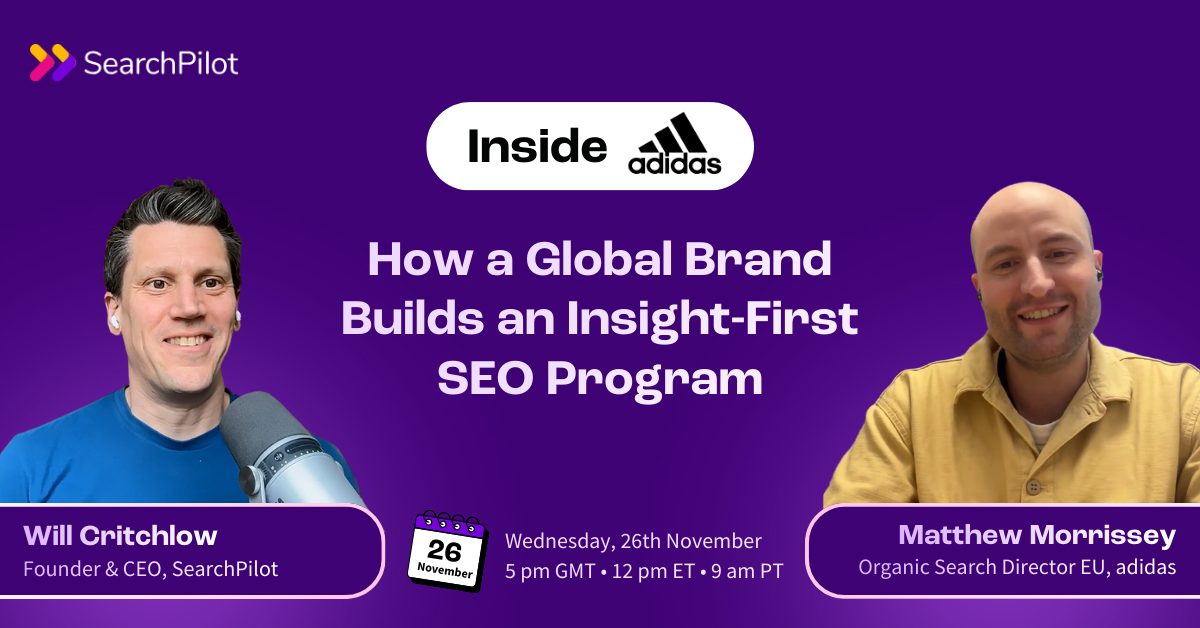How SEO Is Changing in 2025: Key Insights from Rand Fishkin and Will Critchlow
On a spring afternoon in New York, two of search marketing’s longest-standing collaborators – Rand Fishkin (co-founder of Moz, now CEO of SparkToro) and
Will Critchlow (CEO of SearchPilot) – rented a studio, grabbed New York pizza, and hit record.
What followed was a wide-ranging, data-driven conversation about where search is heading, why Google is still expanding at break-neck speed, and how marketers should adapt as large language models (LLMs) reshape discovery.
Why Google Search Volume Is Surging in 2024
Rand opened with fresh click-stream data from Datos, SparkToro’s primary provider. In browsers alone – so excluding Google Lens, the Maps app and voice assistants – Google search volume jumped 22 % in 2024. That equates to roughly one trillion net new searches in a single year, taking the historical total from four to five trillion.
For context, Google added fewer queries across the seven previous years combined. The spike rewrites the narrative that “people are searching less because of ChatGPT”; in reality, total demand for answers is still accelerating – only the packaging is changing.
What Zero-Click Searches Mean for SEO Strategy
Google’s executives frequently claim they “send more traffic to the open web than ever before.” Rand's data reconciles the paradox:
-
Clicks per search are falling. More queries now surface AI Overviews, product grids and map packs that satisfy intent without a click.
-
The denominator is exploding. Because overall query volume is up ~22 %, Google can send fewer clicks on average yet still report a record total number of outbound visits.
But even Google’s patience has limits. In its most recent earnings call, when analysts asked about future click-through trends, execs declined to answer – a tacit admission that the uplift from sheer volume may have peaked.
Is Generative AI a Real Threat to Google Search?
Will drew a distinction between AI chat interfaces and AI as a capability:
Current challengers (ChatGPT, Claude, Perplexity) have impressive models but lack two assets Google owns outright:
-
-
Immense behavioural data – trillions of historical clicks that teach a model which pages satisfy intent.
-
An entrenched distribution channel – the search box where billions instinctively begin every information journey.
-
Google has responded by folding generative answers directly into search results. The company knows it can’t allow users to form a new habit elsewhere, so it intends to be the place where AI answers live.
In other words, AI threatens Google only if Google fails to integrate AI. Right now, it is integrating at speed.
Why Impressions Are Becoming a Core SEO Metric
Will argued that many brands – especially large retailers – must re-tool their measurement stack. As Google’s AI Overviews, Shopping grids and Merchant-Center feeds expand, visibility may rise while referral traffic plateaus or declines.
SearchPilot’s own testing platform now runs experiments that optimise for Search Console impressions when clicks are no longer the sole meaningful KPI. That same mindset will be required across every emerging walled garden: Amazon, TikTok, Steam, Pinterest – wherever the conversion ultimately happens inside the platform.
Follow Audience Attention, Not SEO Hype
Rand illustrated the point with SparkToro data:
-
SEO professionals over-index on tools like ChatGPT and Perplexity.
-
Landscapers – a random example industry – don’t. Their discovery stack is dominated by Pinterest and Facebook.
Marketers, therefore, shouldn’t chase every shiny AI object. Go where your specific audience already spends attention. Test, measure, then decide if AI-powered channels deserve meaningful budget.
That echoes Will's earlier webinar on smarter search strategies, which urged retailers to specialise and align channel mix with finance-team expectations.
SEO Takeaways for CMOs, SEOs & Growth Leaders
-
Model impressions and assisted conversions, not just clicks.
-
Integrate Merchant Center feeds – Google is fast becoming the world’s default product-listing page.
-
Publish everywhere your audience hangs out. Diverse mentions across social, podcasts and niche forums feed the LLMs that surface brand references inside AI Overviews.
-
Double-down on content that humans share. Despite hype, no fully-AI-generated article has yet gone viral on merit alone; human creativity remains a moat.
-
Experiment continuously. Run variant tests (SearchPilot or otherwise) against both traffic and impression metrics to find lever-moving ideas before the industry consensus shifts again.
How to Measure SEO ROI in a Zero-Click World
Neither Rand nor Will pretends to know exactly how fast generative search will cannibalise traditional blue links. What they do know is that:
-
Search demand is still growing.
-
Google will protect its turf by embedding AI rather than ceding queries.
-
Marketers who adapt measurement, follow audience behaviour and keep testing will outrun the inevitable algorithmic turbulence.
If you’d like a deeper look at evidence-based SEO testing – whether for clicks, impressions or brand lift – you can book a demo of SearchPilot and see how leading enterprise teams prove value in a zero-click world.
Stay curious, keep experimenting, and we’ll see you in the results.




